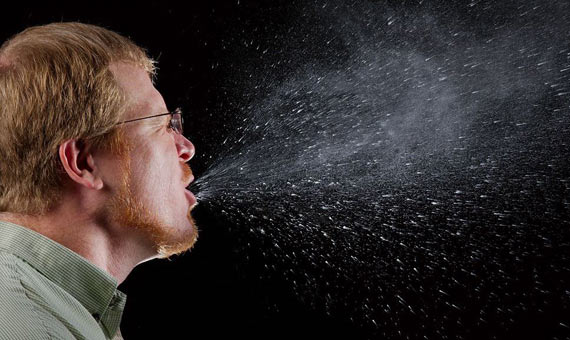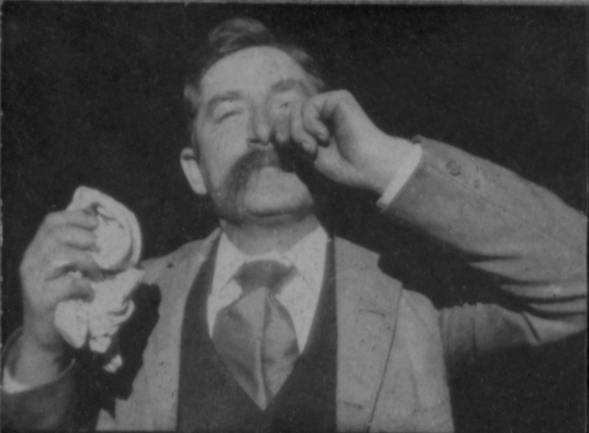Although in appearance humans and iguanas do not seem to have much in common, we are similar in this way: we sneeze, something that other animals such as dogs or cats also do. But humans are unique in our complex sneeze ritual. Not only do we accompany it with onomatopoeic sounds, different according to the language and absent in deaf people, but we respond to it with a formula of courtesy, peculiarly religious—from “God bless you” in English to “Jesus” in Spanish.

The sneeze has a long cultural history, from the times when they were attributed superstitious and mystical meanings, such as being a good omen. Nowadays we know that sneezing is nothing more than a curious physiological response, a violent reflex of the expulsion of air that employs a large number of muscles. In the most general case, sneezing is initiated by the stimulation of the nasal mucosa due to physical agents, such as foreign bodies, or chemicals, such as irritating substances. This irritation signal, initiated by the release of histamine, is gathered by the trigeminal nerve endings and transmitted to the spinal bulb— the sneezing control centre—located between the brain and the spinal cord.
From the spinal bulb, the order to sneeze is sent to different systems of the face, throat and chest. Our eyes close, we inhale deeply, the glottis is closed, the pressure in the lungs increases, and finally the glottis is opened and there is that impetuous expulsion of air, which finds its way out through the nose and mouth, carrying with it, says the theory, the original cause that motivated the sneeze.
Cloud of thousands of tiny droplets
The final result is a cloud of thousands of tiny droplets whose expulsion lasts only 150 milliseconds and whose thickest portion falls a couple of metres away, but whose smaller particles can travel up to eight meters, traversing a whole room. Since a sneeze may contain pathogenic microbes, it is recommended to contain it with a handkerchief or forearm, not with the hand, to avoid the spread of infections.

Such is the force of the sneeze that cases have been recorded of injury to the organism, to the point of tearing the aorta artery, and even a patient who expelled a dental implant through the nose. On the contrary, there is no confirmed record of anyone ever having popped out their eyeballs by sneezing with their eyes open, which according to a popular myth can occur. While it is true that when we sneeze we automatically close our eyes, this is due to the cross communication between the nerves that control blinking and those involved in sneezing.
Connection between the nose and the eyes
The nerve connection between the nose and the eyes is the origin of another remarkable phenomenon: sneezing when you look at a bright light, like the sun. Scientists call it Facial Sneeze Reflection, but they also use a humorous acronym: ACHOO, which more or less corresponds to the acronym of Autosomal dominant Compelling Helio-Ophthalmic Outburst syndrome.
It is often said that ACHOO occurs in up to 35% of the population, but a new study in Germany raises the percentage to 57%. The ophthalmologist Alberto Parafita of the Hospital Complex of Pontevedra (Spain), explains to OpenMind that ACHOO is a genetic trait that is transmitted with a “dominant autosomal inheritance pattern with partial penetrance.” In other words, the trait is not expressed in all the children who inherit it from their father or mother. “We still cannot say which gene is responsible,” he adds.
Parafita is a co-author of a recent study, led by the ophthalmologist Carlos Sevillano, that has studied the structure of the eye in people with ACHOO in search of some anatomical trait that could be related to this reflex. The researchers found that 67% of the subjects examined had corneal nerves more prominent than the average, “in other words, more visible in the usual ophthalmic examination,” says Parafita. Although it is an interesting clue, the researchers are cautious: “There may be a relationship, although we cannot say that it is well established,” concludes the ophthalmologist.
Sneeze after an orgasm
There are even more peculiar cases documented in the medical literature—some people sneeze when they have a full stomach, or after an orgasm, or even with simple sexual arousal. In short, there are still many things we do not know about this reflex. “Although sneezing is a protective reflex response, little else is known about it,” said a review published in 2009.

In fact, some people question its supposed function, that of violently expelling the causative agent of the nasal stimulation. In 2012, William Burke, neuroscientist and Professor Emeritus of the University of Sydney (Australia), decided to test what everyone took for granted without ever having checked it: is the sneeze actually capable of ejecting its cause out of the nose? And surprisingly, the experiments showed that neither the pressure generated nor the expulsion of air through the nose was sufficient to accomplish this mission.
In his study, published in the journal Medical Hypotheses, Burke proposed an alternative theory: “High pressure [in the mouth, not the nose] stimulates secretory neurons via branches in the roof of the mouth. The nasal secretion dilutes the irritant material in the nose and thus prevents it getting into the lungs,” wrote the scientist.
In other words, rather than violently expelling a foreign body like pollen, Burke proposes that sneezing produces mucus that envelops it so that it is eventually swallowed or discharged through the nasal flow. “Many students have repeated the experiments described in the article and have confirmed what I have said,” Burke tells OpenMind. So, while sneezing may no longer be a mystical enigma, it still has a lot of scientific mystery, and that is nothing to sneeze at.
Comments on this publication